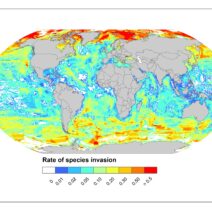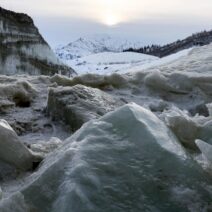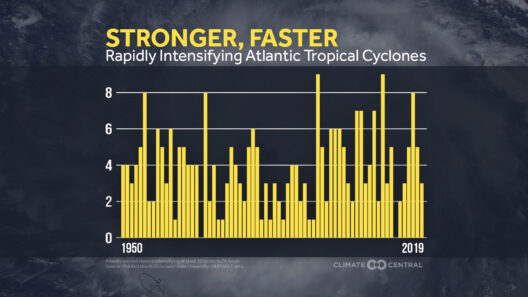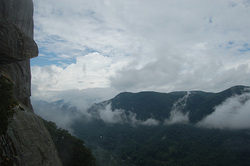Canada, the second-largest country in the world, presents an extraordinary tapestry of climatic zones, ranging from the icy grips of the tundra in the north to the temperate forests in the south. This geographic diversity results in a plethora of climatic conditions, each exhibiting unique characteristics that significantly influence the nation’s ecology, economy, and culture. Understanding Canada’s complex climate is not merely an academic exercise; it broadens one’s perspective on the interactions between climate and human activity in this vast land.
As one travels northward into the Arctic region, they encounter the tundra—a stark, frigid biome characterized by permafrost, a permanently frozen layer of soil beneath the surface. This zone experiences some of the harshest weather conditions in the world. With temperatures that can plummet below -40 degrees Celsius in winter, the tundra’s ecosystem is astonishingly resilient but incredibly vulnerable. Flora here is minimal, consisting primarily of mosses, lichens, and low shrubs that have adapted to the harsh environment. Fauna, including polar bears, caribou, and migratory birds, have also evolved survival strategies that allow them to thrive despite the extreme cold.
Moving southward, the landscape transforms dramatically. As one descends into the boreal forest, or taiga, the climate begins to soften, manifesting a more moderate temperature range and a significant increase in biodiversity. This expansive forest, which constitutes nearly 60% of Canada’s total forest area, is replete with coniferous trees such as spruce, fir, and pine. The boreal forest plays a vital role in carbon sequestration, acting as a crucial buffer against climate change. As part of a global ecosystem, it is essential to recognize the interconnectedness of this resource and the global climate patterns that impact it.
Continuing the journey south, one enters the temperate deciduous forest zone, which boasts a more temperate climate characterized by four distinct seasons. Here, summers are warm and humid, while winters are cold and snowy, creating ideal conditions for a diverse range of flora and fauna. Trees such as maple, oak, and birch flourish in this environment, shedding their leaves in the autumn to conserve water during the frigid months. This biome supports a rich tapestry of wildlife, including deer, foxes, and various bird species, each playing a unique role in the ecological balance.
The prairies present yet another striking contrast within Canada’s climatic canvas. These vast expanses of grasslands receive less precipitation compared to the forested regions, resulting in a semi-arid climate. The prairies are marked by cold winters and hot summers, making them ideal for agriculture. However, even this fertile land is not exempt from the challenges of climate change, facing increasing threats from droughts and extreme weather events. Understanding these adaptations and vulnerabilities is essential for sustainable farming practices and land management.
In British Columbia, we encounter the coastal climate, influenced heavily by the Pacific Ocean’s moderating effects. This region experiences mild temperatures year-round, with generous rainfall that supports the lush rainforests. These forests, bursting with life, are home to towering ancient trees such as the Douglas fir and cedar. Here, the climatic conditions foster a unique ecosystem rich in biodiversity, making it a critical zone for conservation efforts. However, as climate change accelerates, the impacts of warmer temperatures and altered precipitation patterns threaten these delicate environments, calling for urgent action to preserve them.
Moreover, the effects of climate change transcend geographical boundaries, impacting all regions of Canada in multifarious ways. Melting glaciers in the northern territories, earlier snowmelt in the mountains, and increased forest fire risks are alarming signs of a shifting climate. From the tundra to the temperate forests, every biome faces its own set of challenges that demand immediate attention. Rising sea levels threaten coastal communities, while shifting weather patterns disrupt traditional livelihoods and cultural practices of Indigenous peoples reliant on the land.
Canada’s diverse climate is undeniably interwoven with the lives of its inhabitants. Understanding this intricate relationship emphasizes the importance of adaptive strategies that can aid communities in mitigating the impacts of climate change. By embracing sustainable practices, investing in renewable energy, and advocating for policies that protect natural resources, Canadians can actively contribute to a more resilient future. The country is uniquely positioned to be a global leader in climate action, using its vast landscapes and natural resources as a foundation for innovative solutions.
In conclusion, Canada’s climate is not merely a backdrop; it is an integral part of its identity. Spanning from the frigid Arctic tundra to the lush temperate forests, each climatic zone offers a distinct perspective on environmental changes and resilience. By appreciating the intricacies of this vast land and the challenges it faces, we can foster a greater respect for the interconnectedness of our ecosystems and the urgent need for collaborative action. The time is ripe for a renewed commitment to understanding, preserving, and protecting the climate, not just for Canada, but for the entire planet.






